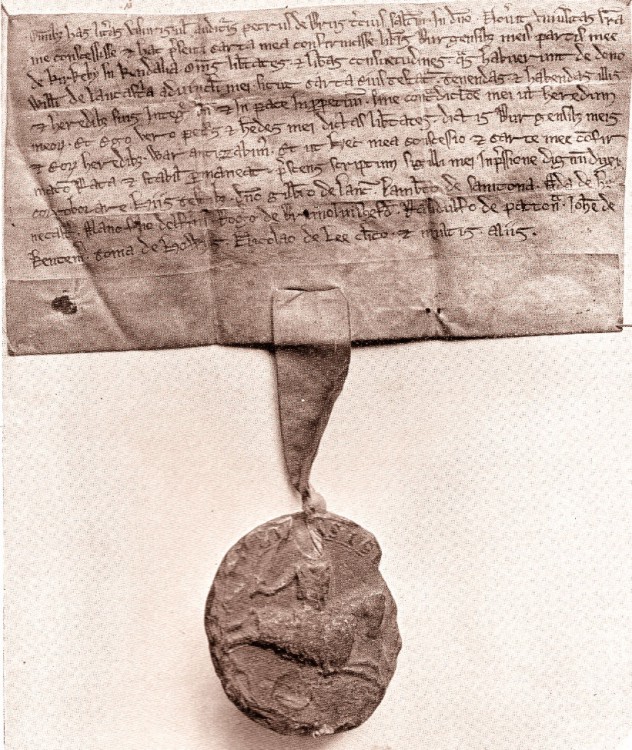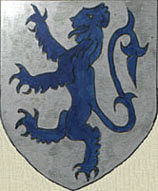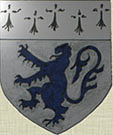|
A Charter issued by Peter de Brus III of Skelton Castle.
|
While browsing in a bookshop in Windermere, Steve Rigby of Crossens, Southport found a booklet, published in 1919, which contained a photograph and translation of this Charter.
He has very kindly contributed the booklet to this website and the following is an extract:-

Peter de Brus III inherited the Skelton Castle Estate in 1240, when his father Peter de Brus II died in Marseille on his way to Palestine to fight in the 6th Crusade.
Peter de Brus III's mother was Hel[e]wise, the eldest sister of William of Lancaster.
William of Lancaster died, childless, in 1247 and his lands were divided between Helwise and a younger sister, Alice.
In this way land in "Kirkeby in Kendale", the ancient name of Kendal, the Parish of which covered an extensive area roundabout, came to be part of the Skelton Castle Estate.
The Charter is a piece of parchment, about 7 inches by 4, with the seal of Peter de Brus III, a circle of green wax about 2 and a half inches in diameter, bearing an equestrian figure and a legend that unfortunately is almost entirely defaced.
It is written in Latin:-
Omnibus has literas visuris vel audituris Petrus de Brus tercius salutem in Domino........
The Booklet provides a translation:-
To all who shall see or hear these letters, Peter de Brus III sends greeting in the Lord.
Know the whole of you that I have granted, and by this my present charter confirmed to my free burgesses of my part of Kirkeby in Kendale all the liberties and free customs, which they had of the gift of William de Lancaster, my Uncle, as his charter witnesses.
To have and to hold to them and their heirs, wholly, well and in peace for ever, without gainsay of me or my heirs:
and I, Peter, and my heirs will warrant the said liberties to my said burgesses and their heirs, and that this my grant and confirmation of my Charter may remain established and permanent I have considered it worthy to corroborate the present writing with the impression of my seal
These being witnessess:-
Sir Gilbert de Lancaster.
Lambert de Samton.
Adam de Hincaster.
Alan, son of Dolfin.
Roger de Burneside.
Randulf de Patton.
John de Kentmere.
Thomas de Howes.
Nicolas de Lee, clerk; and many others.
The Charter confirms "the liberties and free customs, which they had of the gift of William de Lancaster", but William's Charter reveals that these did not amount to much.
Rather the two Charters show the power and control that the descendants of the Norman conquerors still held over the people who lived on their lands.
The "liberties" applied only to "free Burgesses", i.e. those who were not Villeins and the Lord of the Manor's property.
They could "take so many toftes [homesteads] for rent......that is to say vjd [sixpence] by year of every tofte".
The Charter also specified areas where they could collect dead wood, e.g.:-
and that they may take of his or the wood between Kent [local river] and wynndermye, their necessaries without the sight of any of his
[the Lord of the Manor's] foresters."
It also defined set areas where animals owned by the free burgesses could freely graze, e.g.
And that they may have comen pasture on that pte of Kennt...... etc
Peter de Brus III died without issue in 1272 and the Skelton Estate was divided between his four sisters.
The Kendal area was inherited by Margaret, who was married to Robert de Ros.
|
|



